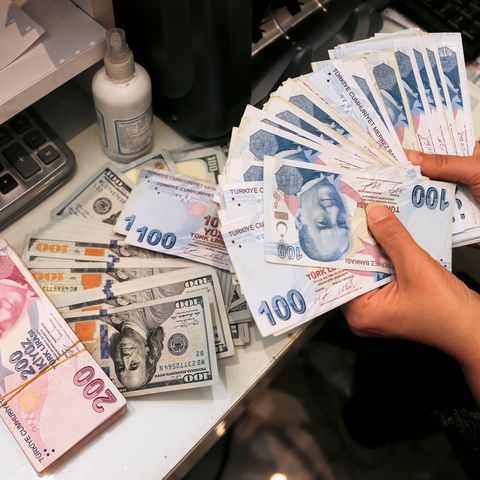Though UV counterfeit detection lamps and counterfeit money pens are of help tools, there are lots of alternative methods to see in case a bill is authentic or counterfeit. Physical characteristics of the banknote, for example ink, watermarks, and text, are intentional security measures to help those recognize authentic money.

When retail associates learn how to spot an imitation $100 bill, they could reduce the chances of a business suffering a reduction of lots of money. Here is a report on eight solutions to tell if a bill is real or counterfeit:
1. Color-shifting Ink
Among the first things to determine if a bill is authentic is that if the check denomination on the bottom right-hand corner has color-shifting ink. Returning to 1996, all bills of $5 or more have this security feature. If you hold a brand new series bill (with the exception of the brand new $5 bill) and tilt it back and forth, you can see that the numeral inside the lower right-hand corner shifts from green to black or from gold to green.
2. Watermark
The watermark is really a characteristic security feature of authentic banknotes. Many of the new bills use a watermark that is certainly really a replica from the face around the bill. On other banknotes, it is an oval spot. Below are a few what to remember when examining a bill’s watermark:
• The watermark should be visible when you retain the bill to the light.
• The watermark needs to be around the right side of the bill.
• If your watermark can be a face, it must exactly match the facial skin for the bill. Sometimes counterfeits bleach lower bills and reprint them with higher values, whereby the face wouldn’t match the watermark.
• If you find no watermark or perhaps the watermark can be viewed without getting organized to the light, into your market is usually a counterfeit.
3. Blurry Borders, Printing, or Text
A computerized red light for counterfeit bills is noticeably blurry borders, printing, or text around the bill. Authentic bills are manufactured using die-cut printing plates that creates impressively wrinkles, so they look extremely detailed. Counterfeit printers usually are not capable of the identical amount of detail. Take a critical look, especially with the borders, to find out if there are any blurred parts inside the bill. Authentic banknotes likewise have microprinting, or finely printed text positioned in various places about the bill. If the microprinting is unreadable, even with a magnification glass, it is probably counterfeit.
4. Raised Printing
All authentic banknotes have raised printing, which can be a hardship on counterfeiters to breed. To identify raised printing, run your fingernail carefully on the note. You ought to feel some vibration on your nail from the ridges of the raised printing. Should you don’t feel this texture, then you should confirm the bill further.
5. Security Thread with Microprinting
The protection thread can be a thin imbedded strip running throughout on the face of a banknote. Inside the $10 and $50 bills the security strip is situated to the right from the portrait, along with the $5, $20, and $100 bills it really is located simply to the left.
Authentic bills have microprinting in the security thread as another layer of security. Here’s a list of the microprinted phrases on authentic banknotes:
• $5 bill says “USA FIVE”
• $10 bill says “USA TEN”
• $20 bill says “USA TWENTY”
• $50 bill says “USA 50”
• $100 bill says “USA 100”
6. Ultraviolet Glow
Counterfeit detection tools and technology use ultraviolet light because this is a clear-cut strategy for telling if a bill is counterfeit. The safety thread on authentic bills glow under ultraviolet light inside the following colors:
• $5 bill glows blue
• $10 bill glows orange
• $20 bill glows green
• $50 bill glows yellow
• $100 bill glows red/pink
7. Red and Blue Threads
With an end examine a traditional banknote, you can find tiny blue and red threads woven in the fabric from the bill. Although counterfeit printers make an effort to replicate this effect by printing a design of red and blue threads onto counterfeit bills, if you possibly could notice that this printing is only surface level, then it is likely the bill is counterfeit.
8. Serial Numbers
The last thing to be sure of a bill could be the serial number. The letter that starts a bill’s serial number corresponds to a certain year, so if the letter doesn’t match the year printed around the bill, it can be counterfeit. Below is their list of letter-to-year correspondence:
• E = 2004
• G = 2004A
• I = 2006
• J = 2009
• L = 2009A
These security measures specified not just in deter criminals from attempting to counterfeit cash except to help people and businesses recognize counterfeit money after they find it.
More information about where to buy fake money go to our web page
